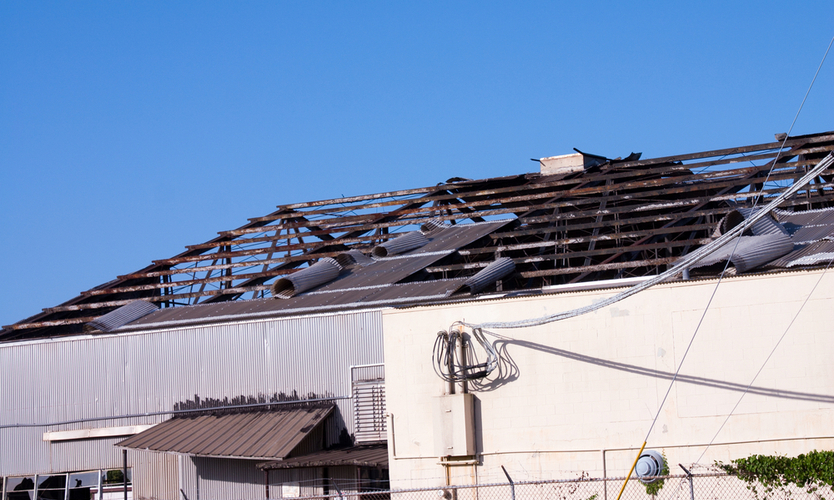 27-05-2020
27-05-2020
Pandemic gives push to digital technologies

 Insurance Alertss
Insurance AlertssPandemic gives push to digital technologies
Travel restrictions and lockdowns related to the coronavirus pandemic have made commercial property inspections and loss investigations more challenging to conduct, experts say.
Despite the difficulties, the pandemic will accelerate the long-term digital push across the industry and the need to leverage remote technologies, they say. “With government-mandated lockdowns, property loss inspections haven’t been possible to a great extent,” said Gary Marchitello, chairperson of Willis Towers Watson PLC’s North American property team in New York. But with the lockdowns easing or called off entirely, the industry is now able to get out and inspect again, he said.
However, the reopening phase is not without obstacles, as many policyholders “don’t want to expose their workers to outsiders, which has been an impediment,” Mr. Marchitello said. The other issue is that insurers themselves are concerned with exposing their employees, he said.
“In many respects, insurers want to get out, they want to inspect again, but they’re respectful of how particular employees might feel. They don’t want to force anybody to be out doing anything they don’t want to do,” he said. Crawford & Co.’s initial response focused on the safety of employees and protecting them from possible exposure to any risk, said Kenneth Tolson, U.S. president of claims solutions at the Atlanta-based company.
In the United States, Crawford conducted a pre-screening of claims to determine if its adjusters were going to be at risk going into these properties, he said. “We found overall only 3% of our claim population was impacted, and those numbers have held steady since then, so we are still able to conduct inspections,” Mr. Tolson said. Still, some areas are locked down more than others. For example, “there are much greater exposure levels in New York City where we had public transportation challenges,” Mr. Tolson said. “Those are the spots that have been toughest for us.”
When it comes to exterior inspections those have gone smoothly, with relatively few concerns from policyholders, because social distancing can be maintained, said Perry Mayerle, Amelia, Ohio-based assistant vice president and director of property claims at American Modern Insurance Group Inc., part of Munich Reinsurance Co. “The challenge has come a bit with the interior inspections,” though the ability to use video technology has helped, Mr. Mayerle said. In these circumstances it’s important to give policyholders options, he said.
If policyholders are comfortable with the arrangement, an adjuster equipped with personal protective equipment such as a mask and gloves can conduct an on-site inspection as normal while maintaining social distance, Mr. Mayerle said. If they don’t want an adjuster in the property, video technology can be used, and “we can guide them through the inspection with an adjuster on the phone,” he said. “A lot of insureds are receptive to that. We’ve definitely seen an increase in video inspections in the past few months,” he added.
Technology plays a key role in effectively adjusting commercial property losses, especially given the social distancing requirements of COVID-19, and the challenges of accessing properties in large-scale natural catastrophes, said Taylor Archambault, manager of commercial property claims for Liberty Mutual Insurance Co. based in Boston.
The insurer recently introduced two new technologies to enhance its ability to remotely inspect and adjust property losses. “The first enables customers to stream video from the damaged property to our claims specialists, which allows them to better understand the damage,” Mr. Archambault said. It also has an app that allows policyholders to provide images of the damage from a smartphone or tablet, and “from there the app can stitch together those images and provide a model or sketch of the room or rooms where the damage occurred,” Mr. Archambault said.
Certain perils and structures are most conducive to the technology, such as “a pipe frame situation, water leak from appliances, sewer backup, low severity, smoke, electrical fires, vandalism, ceiling damage from roof leaks,” he said. The limitation of the technology is that it’s calibrated for smaller spaces. “If you’re a large business with a fair amount of smaller rooms it works just fine. That would include hotels, office buildings, strip malls, restaurants. When you start to move into large commercial open spaces like warehouses and manufacturing facilities, the effectiveness of the technology falls away,” Mr. Archambault said.
Mr. Tolson cited recent investments in self-service tools and remote sensing capabilities that have allowed Crawford to manage more claims from the desk.
“In the (hurricanes) Harvey, Irma and Maria timeframe, we adopted a number of these tools, and we ran more claims from the desk that normally in prior times required putting more people in the field,” Mr. Tolson said. Because of these advances, Crawford can handle more claims remotely now, and COVID-19 has accelerated this, he said.
The deployment of drones for loss investigations will likely increase, too, Mr. Marchitello said. “It doesn’t completely replace boots on the ground, but it can give you a good overview of what the damage looks like, particularly if it’s widespread damage,” he said. Technology played an important role before the public health crisis, but the pandemic has provided “the need and given the industry the shove to use it more broadly,” Mr. Archambault said.
“With upcoming above-average hurricane seasons predicted, these virtual solutions are increasingly important with the risks of a continued outbreak and the second wave of COVID-19,” he said.
Source: Business Insurance
